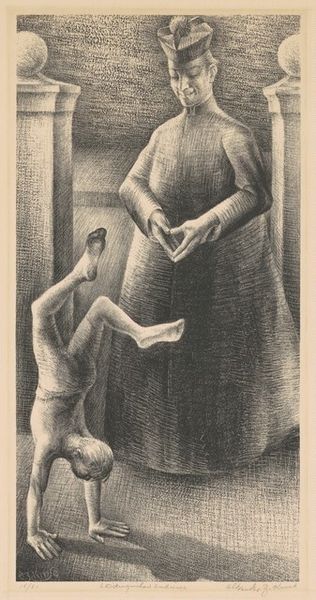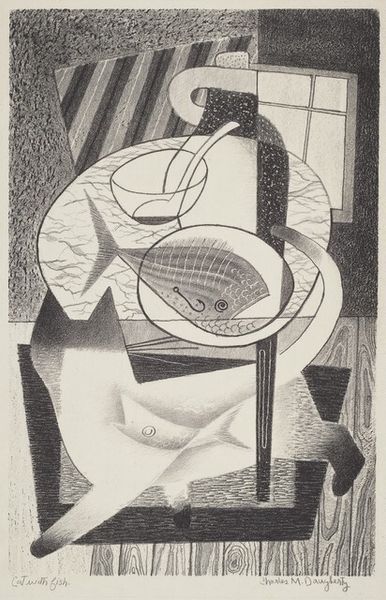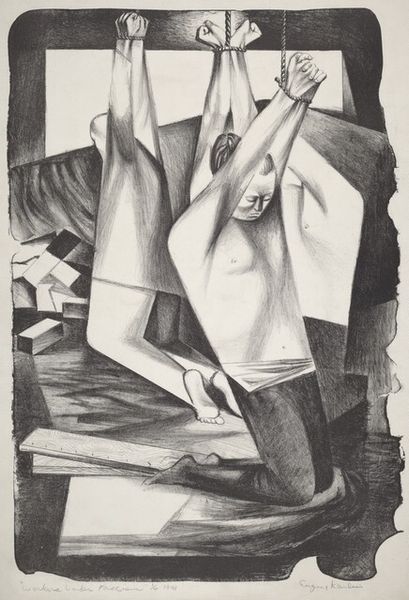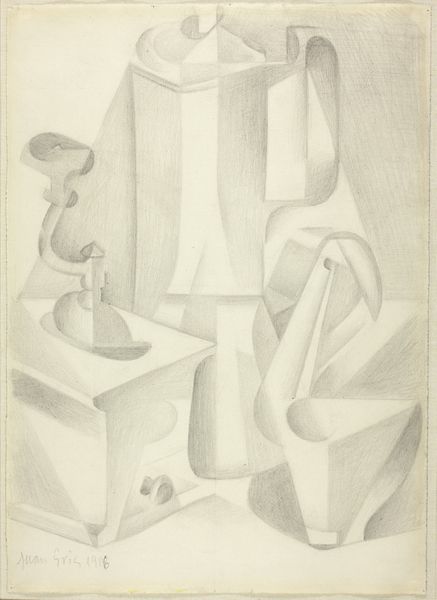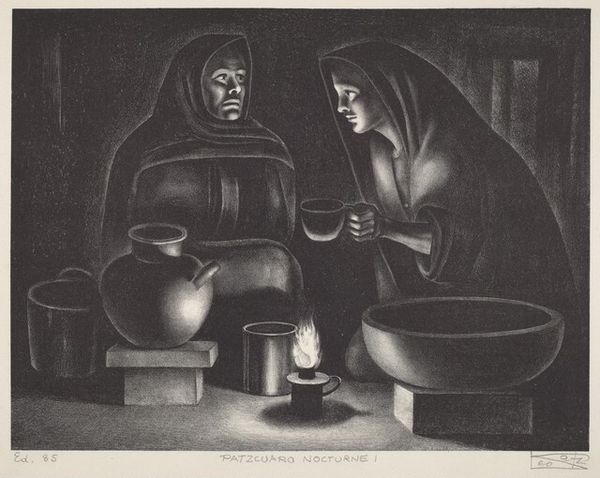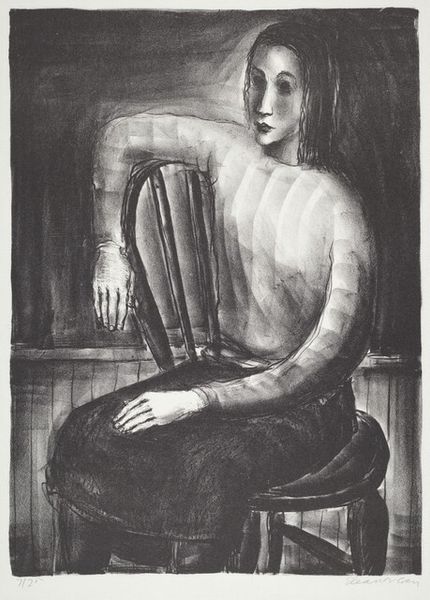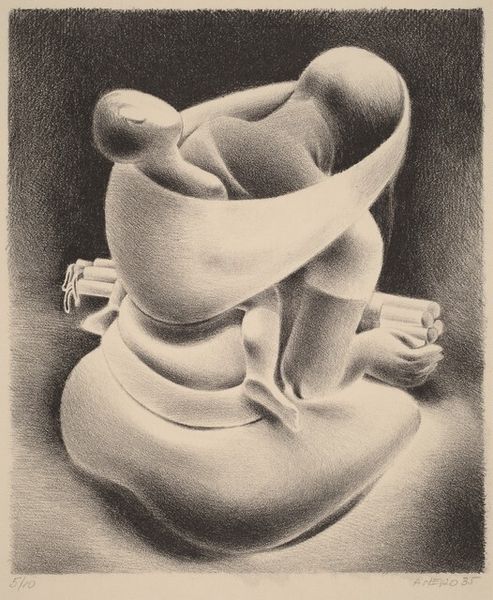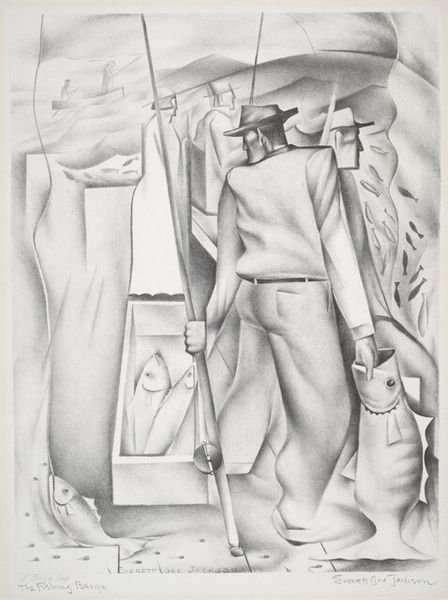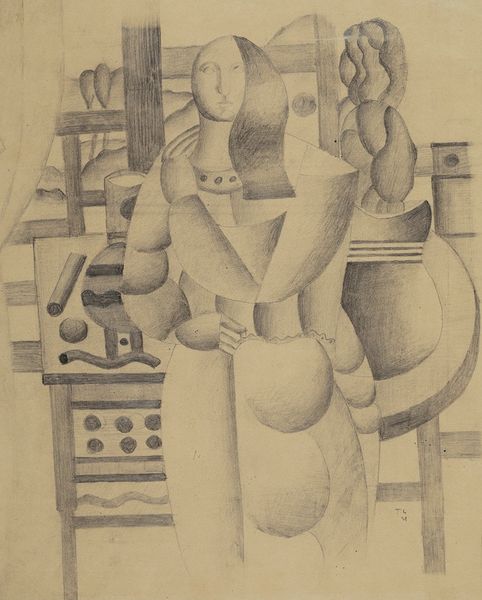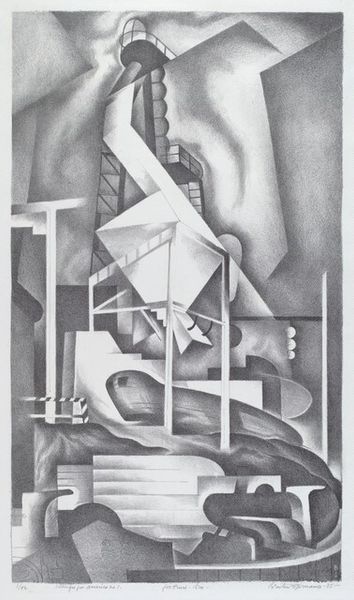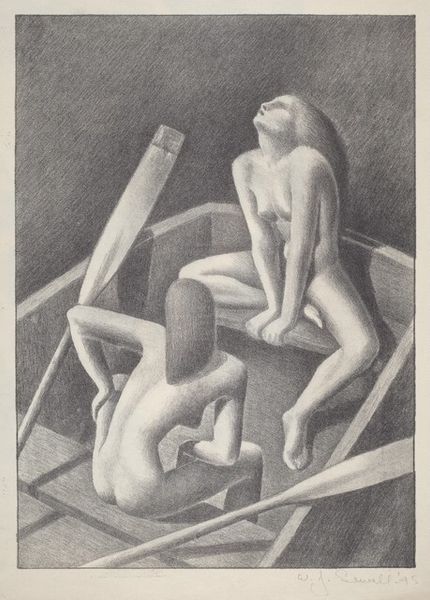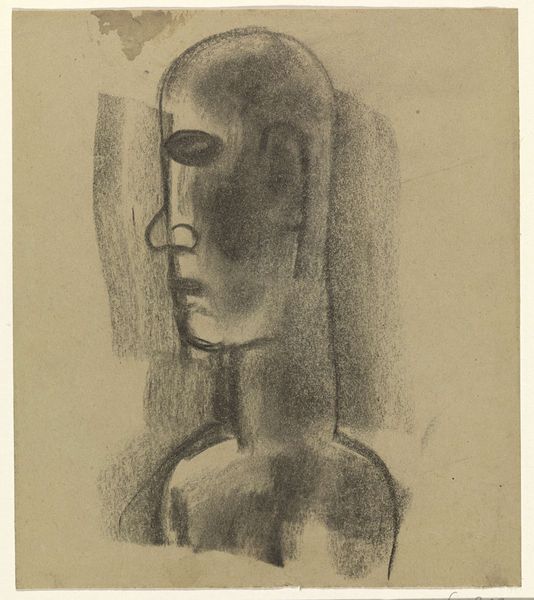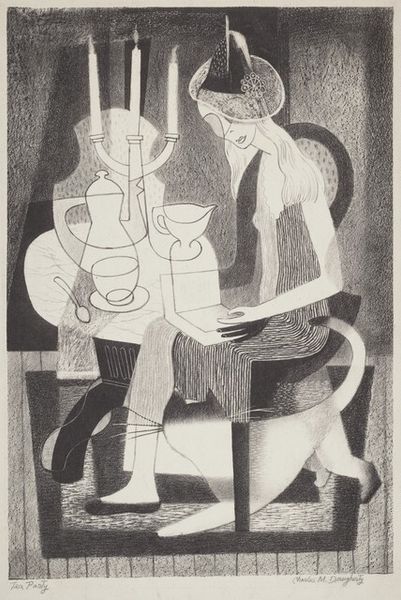
drawing, print, pencil
#
portrait
#
pencil drawn
#
drawing
# print
#
caricature
#
pencil drawing
#
pencil
#
portrait drawing
#
genre-painting
#
modernism
#
realism
Dimensions: stone: 396 x --- mm image: 332 x 239 mm sheet: 431 x 321 mm
Copyright: National Gallery of Art: CC0 1.0
Editor: Everett Gee Jackson’s print, "Sailor Take Care," from around 1933, depicts a sailor and a woman in what seems to be a moment of quiet intimacy. There’s something about the woman's downward gaze that creates a slightly melancholic mood. What social commentary might Jackson be making here? Curator: That's an astute observation. Given the socio-political context of the 1930s, during the Great Depression and on the brink of World War II, the print invites consideration of the artist's commentary on national identity and social roles. The composition prompts us to ponder how popular imagery shaped understandings of military service and domestic life. How do you interpret the symbolism of the title juxtaposed with their reserved posture? Editor: It feels cautionary, perhaps about the sacrifices and anxieties linked to military life during that era. The woman's passivity may symbolize the concerns of those left behind. Curator: Exactly! Now, let's consider the role institutions play in shaping these representations. Was Jackson engaging in overt political messaging, or simply reflecting prevailing cultural attitudes? Do you see it displayed as propaganda or perhaps a commentary? Editor: I think the artwork presents more subtle commentary. The fact that Jackson even produced art that references an enlisted man suggests he aimed to engage in the larger, even contentious debate of supporting those at war. I learned a lot by exploring its socio-historical context! Curator: And that intersectionality informs our interpretation! The ambiguity embedded in the piece reveals the power dynamics at play between national narratives and personal experiences during a complex historical period. I agree; seeing it this way enriched our appreciation.
Comments
No comments
Be the first to comment and join the conversation on the ultimate creative platform.

